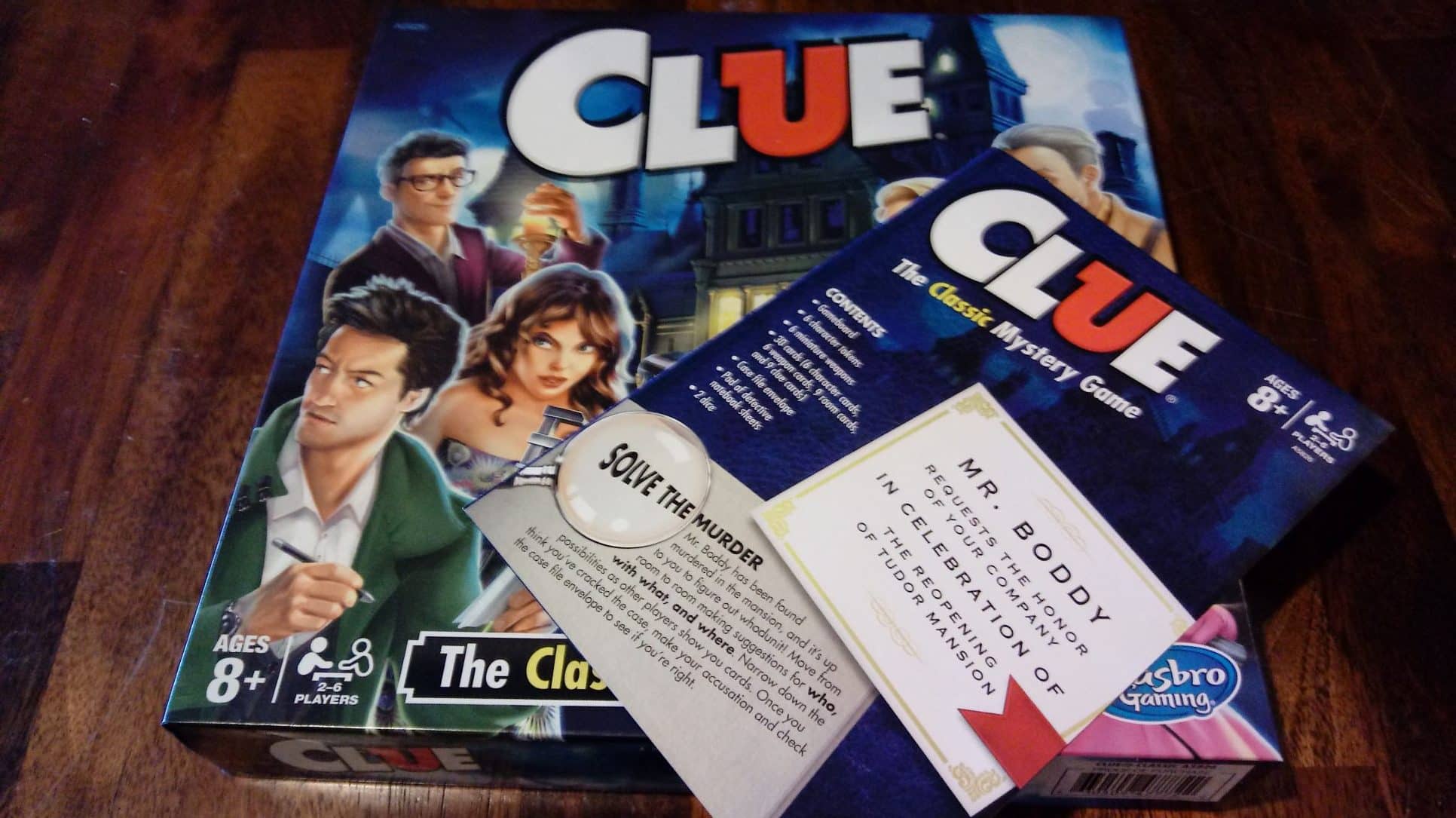Like Clue but want something a little more complex while keeping that mystery feel to it? Then look no further than our 5 mystery board games like Clue. So, what are they?
The 5 mystery board games like Clue are Mysterium, Mansions Of Madness 2nd Edition, Chronicles Of Crime, Letters From Whitechapel, and Deception: Murder In Hong Kong.
Table of Contents
A Quick Note About The Order Of The Below Games
The below 5 mystery board games like Clue aren’t ordered in any particular way other than when I thought of them. So, that means that while Mysterium is first, that doesn’t mean I think it’s any better of a game or any better of a fit for people who like Clue than Mansions Of Madness 2nd Edition or the other games listed below it. I just wanted to let you know before we get to the list.
A Quick Note About The Overviews Of The Below Games
For the overviews, I only included as much as I thought necessary for you to get a good understanding of each game. There is plenty more to know about how to play each game, and what each game offers you in terms of a fun experience, but the below overviews should give you a good idea of what to expect.
Now, let’s get to the games!
Mysterium

Mysterium is the first of the 5 mystery board games like Clue, and it’s a game that I own and have played several times. It originally came out in 2015 and was a pretty big hit. Personally, I love this game for its spooky themes, surreal art, and great production quality. If you are not familiar, this refers to the quality of the components such as the game board, pawns, cards, and so on.
Back-Of-The-Box Facts About Mysterium
- Player Count: 2-7
- Time To Play: 45 minutes to 1 hour and 30 minutes
- Age Range: 10 and up
- Difficulty: Beginner/Easy
- Price Range: $40-$50
- Release Year: 2015
- Publisher(s): Libellud
- Designer(s): Oleksandr Nevskiy and Oleg Sidorenko
- Artist(s): Igor Burlakov, Oleksandr Nevskiy, Oleg Sidorenko, and Xavier Collette
- Where to Buy: Amazon
A Quick Overview Of How To Play It
In Mysterium, one player’s character was murdered before the game started. That player is a ghost who has invited the other players’ characters to the mansion to help them figure out who killed them. None of the player characters are suspects like they are in Clue, they really are just trying to help.
During the game, the ghost cannot communicate in any way with the other players. They can’t speak or use hand signals, nothing. The only way they can help the players to figure out who murdered them is by giving them vision cards.
Each other player is a medium, someone who can see visions from the spirit world. Prior to the game, each of them was assigned a suspect, location, and weapon card by the ghost in secret. The ghost uses the vision cards to help them to guess each.
The problem is that each vision card is a surreal painting. The ghost has to pick the right cards so that the players will take the right clues from the card and make the correct choices for suspect, location, and weapon.
How To Win/How The Game Ends
The game lasts for 7 rounds. If all players guess correctly before the 7 rounds are up, then they go to one final round where they hold a majority vote to pick one of the suspect, location, and weapon sets. The ghost gives them a few more vision cards to help. If they’re right, they win. If not, everyone loses.
Similarities To Clue
Clue is all about solving a mystery, specifically a murder mystery. Mysterium has the exact same goal, although it has more supernatural elements.
Mysterium also has process-of-elimination elements too. Unlike Clue, everyone’s working together in Mysterium, but they still have to eliminate characters, weapons, and rooms although in Mysterium they’re called characters, objects, and locations.
Plus, there’s the rule of three in both games, and there’s also only one correct answer. By the rule of three, I mean that in both games the correct answer involves three things: a person, item, and place.
Both Mysterium and Clue take place in a mansion where someone has been murdered and both (somewhat in the 2018 version) have an old-timey feel to them, which I particularly like even though I know not everyone will.
Differences From Clue
Mysterium is different from Clue in several ways. For one thing, it comes with way more potential suspects, items, and locations. This keeps the game much more replayable.
Another difference is that the people playing the game aren’t playing the suspects. They’re just mediums who come in and try to figure out who did it. Also, Mysterium takes place on Halloween night and is not a dinner party like it is in Clue.
Mysterium is also fully cooperative, meaning that the players either win or lose together. The players can share quite a lot of information with each other and also talk to each other about guesses and such (except the player who’s the ghost).
Mysterium also involves a lot more interpretation since the cards each player is given to help them figure things out are so deliberately ambiguous. That’s a big part of where the fun is though.
The ghost player has to figure out how the other players will interpret the cards they give them. Sometimes they’re right, and sometimes they’re hilariously wrong.
Who Would Like This Game?
Is anyone looking for a spooky, cooperative game that isn’t too hard to play and has lots of replayability? If you like Clue and want a step up with a game that has some really cool art and atmosphere, then Mysterium is a great choice. Just keep in mind one player will have to be silent the entire game, but you may find lots of players want to be the ghost because it is actually pretty fun.
Mansions Of Madness 2nd Edition
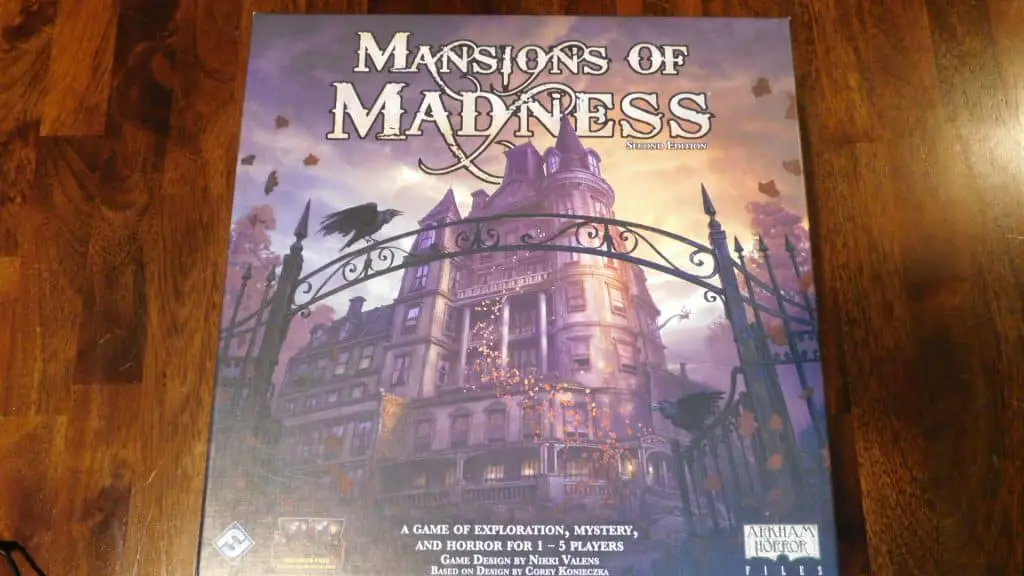
Mansions Of Madness 2nd Edition is the 2nd of the 5 mystery board games like Clue. I’ve had the original Mansions of Madness in my game collection since I started really getting into the hobby around 2011.
The 1st edition featured 1 player acting as the dungeon master (the person who controls the game) while the other players were investigators trying to figure out the mystery of that scenario and then complete an objective.
The 2nd edition came out in 2016, and an app took care of running the game while all players worked together cooperatively. They were still solving mysteries and completing objectives though.
It also happens to be one of my favorite games of all time.
Let’s take a look at the back-of-the-box facts.
Back-Of-The-Box Facts About Mansions Of Madness 2nd Edition
- Player Count: 1-5
- Time To Play: 2-3 hours
- Age Range: 14 and up
- Difficulty: Intermediate/Medium
- Price Range: $60-$80
- Release Year: 2016
- Publisher(s): Fantasy Flight Games
- Designer(s): Nikki Valens
- Artist(s): Yoann Boissonnet, Tony Foti, Jacob Murray, Magali Villeneuve, Corey Konieczka, Cristi Balanescu, and Anders Finér
- Where to Buy: Amazon
A Quick Overview Of How To Play It
Firstly, you’ll need to use a device, such as a tablet or a computer, to run the app. I believe you could use a phone too, but I don’t recommend that since it would be too small. The app is easy to download and also really easy to use. You can get it on Steam, Amazon, Google Play, or the Apple store.
To start a game, you’ll pick a scenario from the app after clicking “New Game.”
One of the great things about the app is that it will tell you what map tiles you need, what cards and tokens to play with, and so on. So, instead of taking a really long time to set up the game (such as in the 1st edition), you only grab what you need when the app tells you to.
There is a little bit of setup in the beginning when you shuffle decks and organize tokens, but that’s about it.
Every round there are two phases: the Investigator Phase, and the Mythos Phase.
Let’s start with the investigator phase.
Investigator Phase
Investigators (players) take turns in whatever order they choose together, and they can change this order each round. During an investigator’s turn, they can take up to 2 actions.
The actions are as follows:
- Move: Each move lets an investigator move up to 2 spaces.
- Explore: This action lets an investigator open a door to reveal what’s in a new room.
- Search: This action lets an investigator investigate a “?” token in the space they’re currently on.
- Trade: This one lets an investigator give as many of their common items, unique items, or spells to any other investigator in the same space.
- Interact: This one allows an investigator to interact with a person or object in the same space.
- Component: This one allows an investigator to use an action on a card they have (which can be done if the card says “Action:”).
- Attack: This final action allows an investigator to attack a monster. This could be a monster in their space or a monster that’s farther away.
Once all investigators have taken their turn, it’s time to move into the Mythos Phase.
Mythos Phase
During this phase, several things will happen.
They are as follows:
- Mythos Events: These are things that happen throughout the game such as a monster spawning or a room changing in some way.
- Monster Activations: Every currently spawned monster moves and can also attack investigators (depending on range).
How To Win/How The Game Ends
The game ends in one of two ways. Either the investigators figure out the mystery and complete their objective, or the investigators take too long and lose. How long investigators have to solve a mystery varies from scenario to scenario.
Similarities To Clue
Mansions Of Madness 2nd Edition has many similarities to Clue.
Firstly, Mansions Of Madness 2nd Edition usually takes place inside a mansion. Sometimes, it even has rooms that are similar to Clue such as both having a Billiards Room.
Mansions Of Madness 2nd Edition is also about a mystery. There’s lots of movement and even some guessing in the game.
It also has a similar feel to Clue. The original versions of Clue (and even many of the newer ones) take place in an older mansion far away from everyday life. The same is true of Mansions Of Madness 2nd Edition. Because of this and because both feature mysteries, there’s a certain foreboding atmosphere that can sometimes come about, which is a good thing because it adds to the immersion both games can provide.
Now, let’s get to the differences.
Differences From Clue
One main difference is that, unlike Clue, everyone is working together in Mansions Of Madness 2nd Edition. Also, unlike Clue, the game is much longer, taking anywhere from 2-3 hours in some cases.
In addition, Mansions Of Madness 2nd Edition is a more complex game. It’s not that you have to sit and plan out your decisions too much, it’s just that there are more things you can do, and there are more things to keep track of.
That’s not to mention that Mansions Of Madness 2nd Edition has an app while Clue doesn’t. Plus, Mansions Of Madness 2nd Edition has far more replayability thanks to having four scenarios in the base game and a whole bunch more in the expansions.
Who Would Like This Game?
I would rate Mansions Of Madness 2nd Edition as an intermediate/medium level of difficulty, so people looking for more of a challenge (but not too much) would enjoy this game. Also, people who like H.P. Lovecraft and his worlds would really enjoy this game as those are what it’s based around. Anyone looking for something more cooperative and less competitive would also enjoy Mansions Of Madness 2nd Edition.
Overall, if you’re looking for an eerie experience, like solving mysteries, want to be immersed in your game, and want to do all this alongside your friends and family instead of against them, then Mansions Of Madness 2nd Edition is the game for you.
Chronicles Of Crime
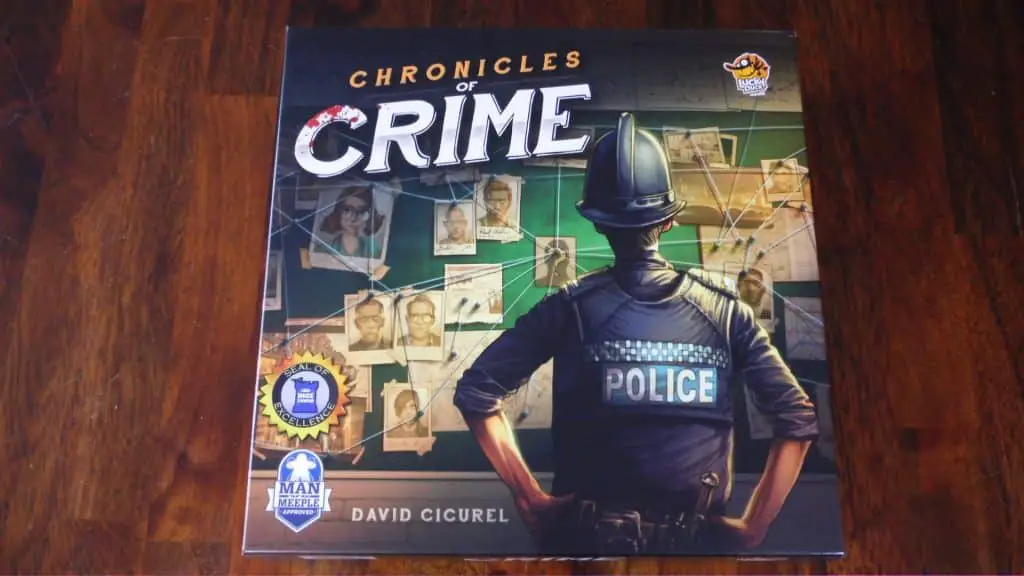
Chronicles Of Crime is the 3rd of the 5 mystery board games like Clue. I have not yet played Chronicles Of Crime, but I intend to. I’ve wanted to play a game like this for a while, so it’s only a matter of time.
That said, I’ve heard really good things about it. So, without any further ado, let’s get to the back-of-the-box facts about Chronicles Of Crime.
Back-Of-The-Box Facts About Chronicles of Crime
- Player Count: 1-4
- Time To Play: 1 hour to 1 hour and 30 minutes
- Age Range: 12 and up
- Difficulty: Intermediate/Medium
- Price Range: $30-$40
- Release Year: 2018
- Publisher(s): Lucky Duck Games
- Designer(s): David Cicurel
- Artist(s): Matijos Gebreselassie, Katarzyna Kosobucka, Mateusz Komada, and David Cicurel
A Quick Overview Of How To Play It
The first thing to know about Chronicles Of Crime is that it is an app-assisted game. In fact, it would be more accurate to call this an app-required game since you can’t play it without one (you’ll see why in a bit). You can download the app through either Google Play or the Apple Store. Before each game, you’ll go into the app and select a scenario to play for that game.
One unique element of Chronicles Of Crime is that there is no turn order. This means that all players aren’t just cooperating, they’re also making all decisions together too. Your goal is to solve whatever case is associated with the scenario you chose. Your end-game score depends on how well you solved the case, which depends on what answers you give the chief at the end of the game.
Actions Each Turn
Each “turn,” you and the people you’re playing with choose what to scan with your device. Each item, location, and character has a QR code.
When you scan one a few things can happen, which are listed below:
- Scan Location: This lets you move to that location.
- Scan Character: This lets you interrogate that person.
- Scan Evidence: This lets you acquire this piece of evidence, gives you more information about it, and tells you if you need to keep it.
- Scan Forensic Contact: This lets you call contact specialists who can give you more information such as details from an autopsy.
The Clock Is Ticking
But there’s a catch to all of this aside from maybe getting the wrong answers, and that catch is time. You see, every single scan you make either takes 5 minutes of time or 20 minutes of time. 5 minutes for scanning an item, character, or crime scene, and 20 minutes for traveling to a different location.
Time affects whether or not certain information is available or if characters will be available too. Time is something you’re always going to want to be aware of since it can affect how well you solve the case.
How To Win/How The Game Ends
Once you’re done figuring out the case as best you can, you report back to the Chief Police Officer and tell him everything you know. The app will guide you through this process and give you a score depending on your answers.
So, how is all of this similar to Clue?
Similarities To Clue
Similar to Clue, Chronicles Of Crime is about solving a mystery. Clue’s mystery is very simple whereas Chronicles Of Crime’s mystery is much more complex, but both are pretty easy games. Obviously, Chronicles Of Crime will require some more teamwork and thinking, but there are lots of ways to get the information you need to figure out what’s going on.
Differences From Clue
Chronicles Of Crime will take longer than Clue, and it’s fully cooperative whereas Clue is competitive. Also, Chronicles Of Crime requires a device and an app whereas Clue does not. Chronicles Of Crime is going to be more difficult than Clue, but I don’t think it will be by much.
Who Would Like This Game?
Anyone who likes escape rooms, detective shows, or wants a deeper mystery to solve than what’s offered in Clue. Another great thing about Chronicles Of Crime is that it has 6 expansions, each with multiple scenarios to play. So, if you like Clue but don’t think it offers enough content, then Chronicles Of Crime has you covered.
This would not do well with younger kids, but it is rated for 12 and up, and I think this game could work for some families, just not one you’d want to play all the time. Plus, you’ll want to keep in mind that there is some mature content in this game that not everyone will find suitable too. Overall though, I think this game will most appeal to people who like mysteries and solving them.
By the way, if you’re interested in the expansions, here they are:
- 1 – Chronicles Of Crime: 1400
- 2 – Chronicles Of Crime: Noir
- 3 – Chronicles Of Crime: 2400
- 4 – Chronicles Of Crime: 1900
- 5 – Chronicles Of Crime: Welcome To Redview
- 6 – Chronicles Of Crime: The Millennium Series – Bundle (I could only find this one at Lucky Duck Games website as part of a bundle)
- Bonus: Chronicles of Crime: The Virtual Reality Module
Letters From Whitechapel
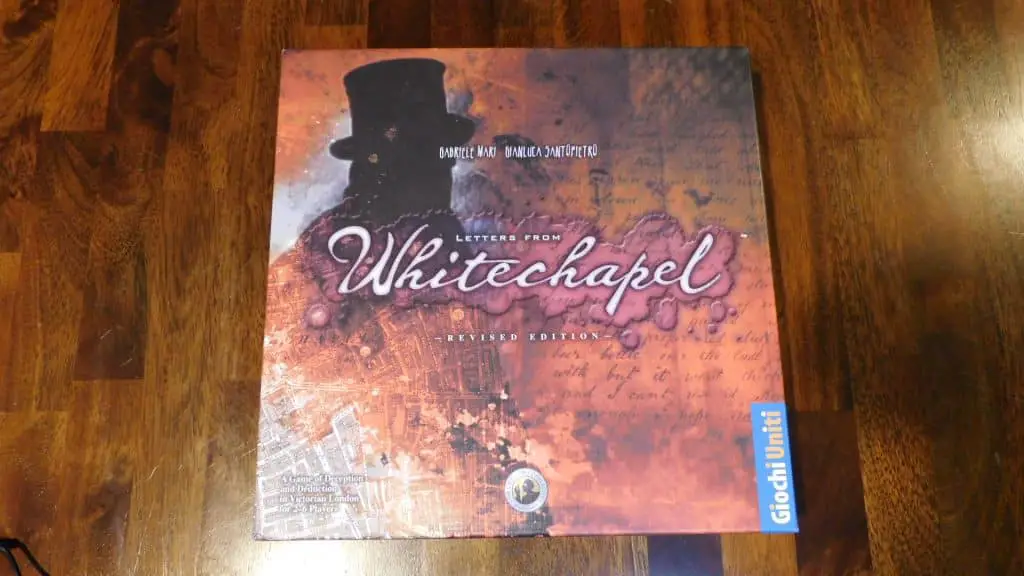
Letters From White chapel is the 4th of the 5 mystery board games like Clue, and it’s another game I haven’t played (sigh, I’m really trying here). However, it’s a game I’ve wanted to get for a long time, but for one reason or another have never pulled the trigger on. It’s one of the few games based on real history that has interested me in any way, and I’d love to give it a go one day.
With that said, let’s get to the back-of-the-box facts.
Back-Of-The-Box Facts About Letters From Whitechapel
- Player Count: 2-6
- Time To Play: 1 hour and 30 minutes to 2 hours
- Age Range: 14 and up
- Difficulty: Intermediate/Medium
- Price Range: $40-$50
- Release Year: 2011
- Publisher(s): Fantasy Flight Games
- Designer(s): Gianluca Santopietro and Gabriele Mari
- Artist(s): Gianluca Santopietro
A Quick Overview Of How To Play It
Letters From Whitechapel takes place over four nights (rounds). One player is Jack The Ripper and the other players are detectives. Jack The Ripper is trying to commit murders and get away with them while the detectives are trying to catch him. Whichever side completes their goal wins.
Each night is divided into two parts. The first part is called Hell and the second part is called Hunting. Because each part has multiple steps, we’re only going to briefly go over each step.
Now, this is where this overview diverges a bit from the others. I haven’t played this game, but watching a couple of videos and reading about how to play it, well…there’s a lot. If I played the game, I think I’d get the hang of it pretty quickly, and I imagine you would too. But putting all of this into step-by-step text form is going to be confusing.
So, instead, I’m just going to provide a really brief summary.
A Brief Summary Of Gameplay
Since there are 2 parts, I’m going to break up the summary into each part.
Let’s start with part 1.
Part 1: Hell
So, in part 1 Jack and the detectives set up. Jack sets up who he’s going to kill and the detectives set up their patrols. Most of this phase involves Jack deciding if he’s going to kill right away or wait a little while. Different outcomes will happen depending on when Jack kills, but he will have to kill at some point.
Part 1: Hunting
In short, part 1 is mostly Jack’s phase. Part 2 is where the detectives get to do their thing. Jack does get to move at the beginning, but then the detectives discuss where they think Jack is and move their pawns accordingly.
Then, each detective states whether they’re looking for clues or executing an arrest. When looking for clues, they state the number of a circle next to where their pawn is. If Jack has moved there at all that night, he places a clue marker over that space. If not, the detective can keep naming numbered spaces they’re adjacent to until they either get a hit or run out of spaces.
When executing an arrest, they name one numbered space next to them. If Jack is there, he’s arrested and the detectives win. If not, nothing happens and that detective’s turn is over.
Once all the detectives have gone, Jack gets to move again. His goal is to get back to his hideout. If he does, he declares he’s escaped and the next night begins. If not, and time runs out, he’s arrested.
Similarities To Clue
Both Clue and Letters From Whitechapel involve a murder. Whereas Clue only has one murder, Letters From Whitechapel has a lot of it. Both are centered around solving their respective murders as well.
Differences From Clue
Letters From Whitechapel is a lot longer than Clue. This is a game that can easily take 2 hours or maybe even more in some cases. Letters From Whitechapel is also a more complex game than Clue, and it also requires far more strategy from both the detectives and Jack The Ripper.
In addition, Letters From Whitechapel is based on real history whereas Clue is not. Plus, Letters From Whitechapel takes place all over London while Clue only takes place in a mansion. Not to mention the fact that Letters From Whitechapel is a one versus all type of game whereas Clue is free for all.
Who Would Like This Game?
This is a game for those who want something darker and more sinister than Clue. Letters From Whitechapel is dripping with tension, and death, and has this grim feel to it that Clue doesn’t. I’m sure Letters From Whitechapel is fun, after all, it’s been around for a while now, but it’s a darker, heavier kind of fun than Clue.
This is definitely not a game for families, and it’s not a game for people looking for something to just do for a couple of hours. This is a game for those who want to think and outwit each other.
Deception: Murder In Hong Kong
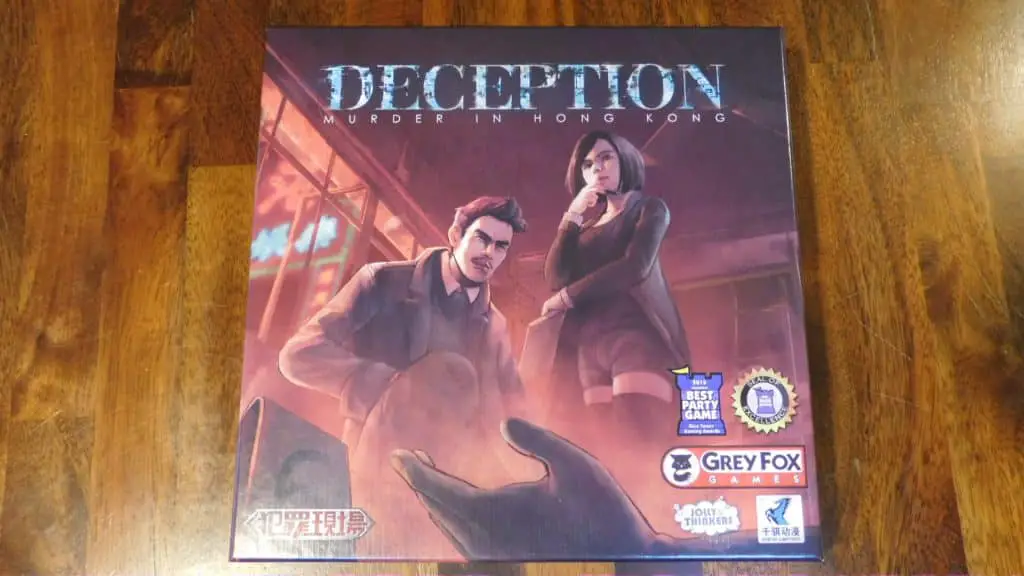
Last but not least, Deception: Murder In Hong Kong is the 5th of the 5 mystery board games like Clue. You know, it’s funny because I once owned this game years ago, never played it, then got rid of it. I remember being excited about it because it was so popular and still is, but when I got it I just didn’t get it. Plus, I already had a lot of other party games, so I ended up giving it away.
Still, this game deserves to be on this list, and it is one I would happily play just to see how wrong I was. And, of course, to play a good game. Here we go!
Back-Of-The-Box Facts About Deception: Murder In Hong Kong
- Player Count: 4-12
- Time To Play: 15 to 30 minutes
- Age Range: 14 and up
- Difficulty: Beginner/Easy
- Price Range: $20-$30
- Release Year: 2014
- Publisher(s): Grey Fox Games
- Designer(s): Tobey Ho
- Artist(s): Ben Carre, Tommy Ng, Marcin Adamski, and Ari Wong
A Quick Overview Of How To Play It
Prior to beginning, each player will be given a Role card. This Role card will either be a Forensic Scientist, Investigator, Murderer and depending on if playing with 6 or more players, potentially a Witness and an Accomplice. Everyone is also given a badge token and 4 Clue cards and 4 Means cards (all these cards are face up).
After having some time to look over all the Clue and Means cards, all players will close their eyes except the Forensic Scientist. They then give instructions for which players to open their eyes and what they should do when they do so. Ultimately, this is the part of the game where the Murderer points to one of their Clue and Means cards. These cards will be important later.
Gameplay
Gameplay for Deception: Murder In Hong Kong takes place over 3 rounds. Each round is divided into two parts: Evidence Collection and Presentation.
Evidence Collection
During Evidence Collection, 6 tiles will be placed face up. 2 of the tiles will be the Cause Of Death tile and the Location Of Crime tile. The other 4 will be random Scene tiles.
Each tile has 6 words on it. The Forensic Scientist takes 6 bullet tokens and places 1 bullet token on 1 word of each of the 6 tiles. These are supposed to help guide the Investigators to pick the right Clue and Means cards. The Investigators (and the Murderer and Accomplice) are free to discuss what they think the words are pointing to, but the Forensic Scientist can’t say anything about it.
Presentation
During Presentation, each player has 30 seconds (or more if you all agree) to make their case about what the correct Clue and Means cards are. This repeats for another 2 rounds.
If at any point, any player thinks they’ve figured it out, they turn in their Badge token and point to the Clue and Means card in front of another player that they’re guessing. If they’re correct, the Investigators win, and if they’re wrong even a little bit, then the Forensic Scientist simply says, “No.”
It’s important to note that each Investigator only has 1 chance to solve the crime, and this must happen before the final presentation of the 3rd round. If no one solves the crime, the Murderer wins.
Playing With The Witness And Accomplice
If playing with the Witness and the Accomplice, the rules change slightly. The Witness knows who the Murderer and Accomplice are, but not how the crime was committed and not which player is the Murderer and which one is the Accomplice.
They can use this information to help make good cases, but they don’t want to give away that they’re the Witness. This is because if the Investigators correctly solve the crime, then the Murderer and the Accomplice get a chance to guess who the Witness is. If they’re right, then they win!
The Accomplice doesn’t do anything special other than knowing who the Murderer is and how they committed the crime. They are there to help the Murderer identify the Witness, and also they’re there to help get people off track.
Similarities To Clue
Like Clue, and like several other games on this list, Deception: Murder In Hong Kong is about solving a murder. Also like Clue, Deception: Murder In Hong Kong is about naming multiple things involved in that murder. In addition, each player only gets one shot to solve the murder.
Differences From Clue
Deception: Murder In Hong Kong will play faster than Clue. It’s also more of a party game (if that can be said about a game involving murder), and everyone’s working together except for 1 or 2 players. There’s also a lot more thinking in Deception: Murder In Hong Kong as you try to read other players, figure out what the Forensic Scientist is trying to hint toward, and so on.
Plus, there’s no movement in Deception: Murder In Hong Kong. There’s no game board either; everything takes place on cards and tiles.
Who Would Like This Game?
Anyone looking for more of a social deduction game would like Deception: Murder In Hong Kong. Of these 5 mystery board games like Clue, this one is the fastest too.
This is a game for those who want to think too. This is also a game for those who want to outwit each other, which is especially important for the Murderer.
Did You Know?
(Each time you refresh the page you will get a new “Did You Know” fact!)
Did you know that Pachisi/Parcheesi/Ludo inspired more games too? As it turns out, both Sorry and Trouble are variants of the originals. Really cool!
Conclusion: 5 Mystery Board Games Like Clue
So, there you have it, 5 mystery board games like Clue. There are definitely many more than these, so maybe someday we’ll do an article with more. Plus, there are always new games coming out that we can add to a new list!
What do you think though? Which of the 5 mystery board games like Clue are you most excited to try out first? Is it Mysterium, Mansions Of Madness 2nd Edition, Chronicles Of Crime, Letters From Whitechapel, or Deception: Murder In Hong Kong? Let me know in the comments below why!
And, as always, keep on gaming, fellow maniacs.

